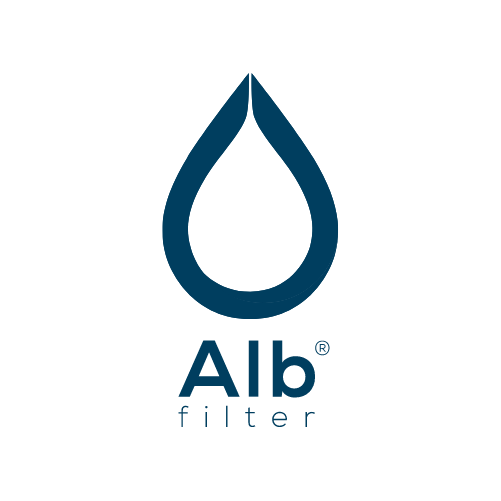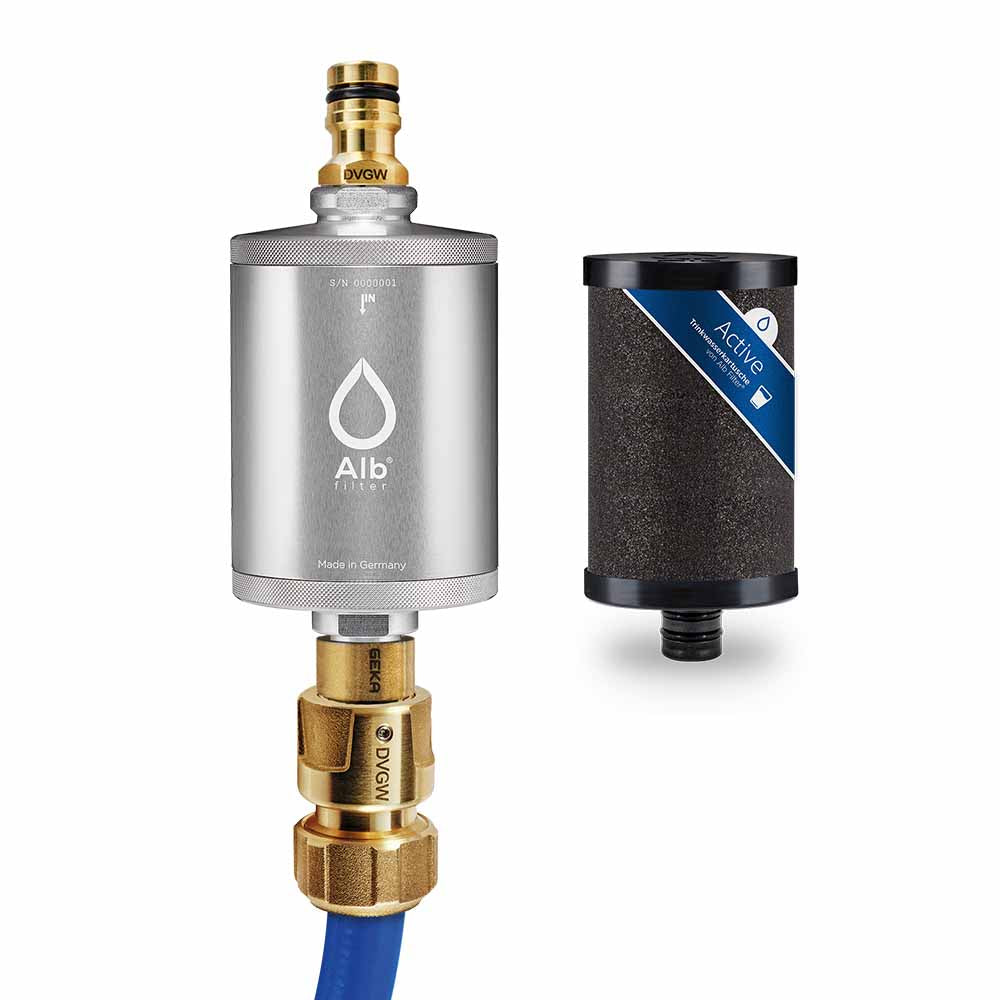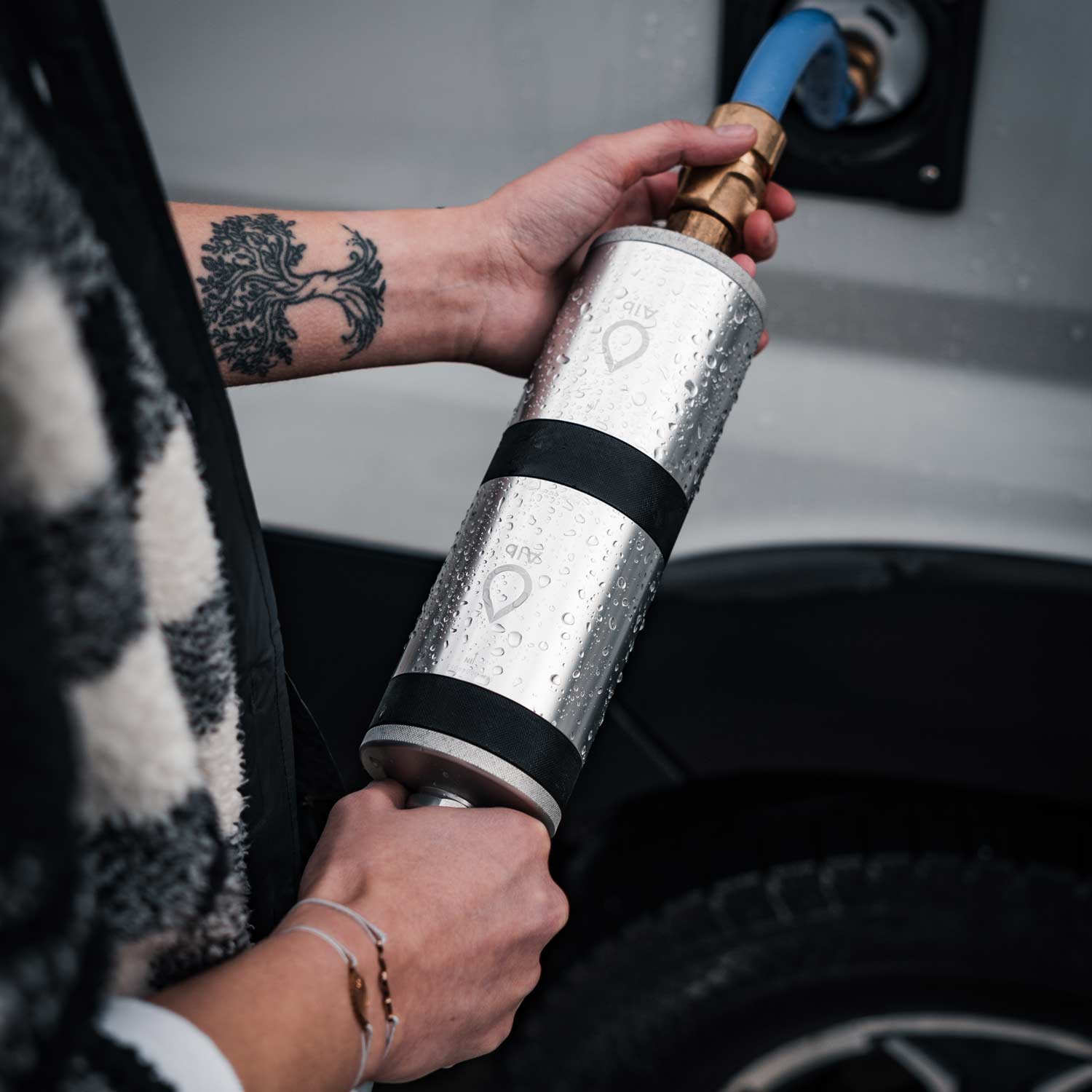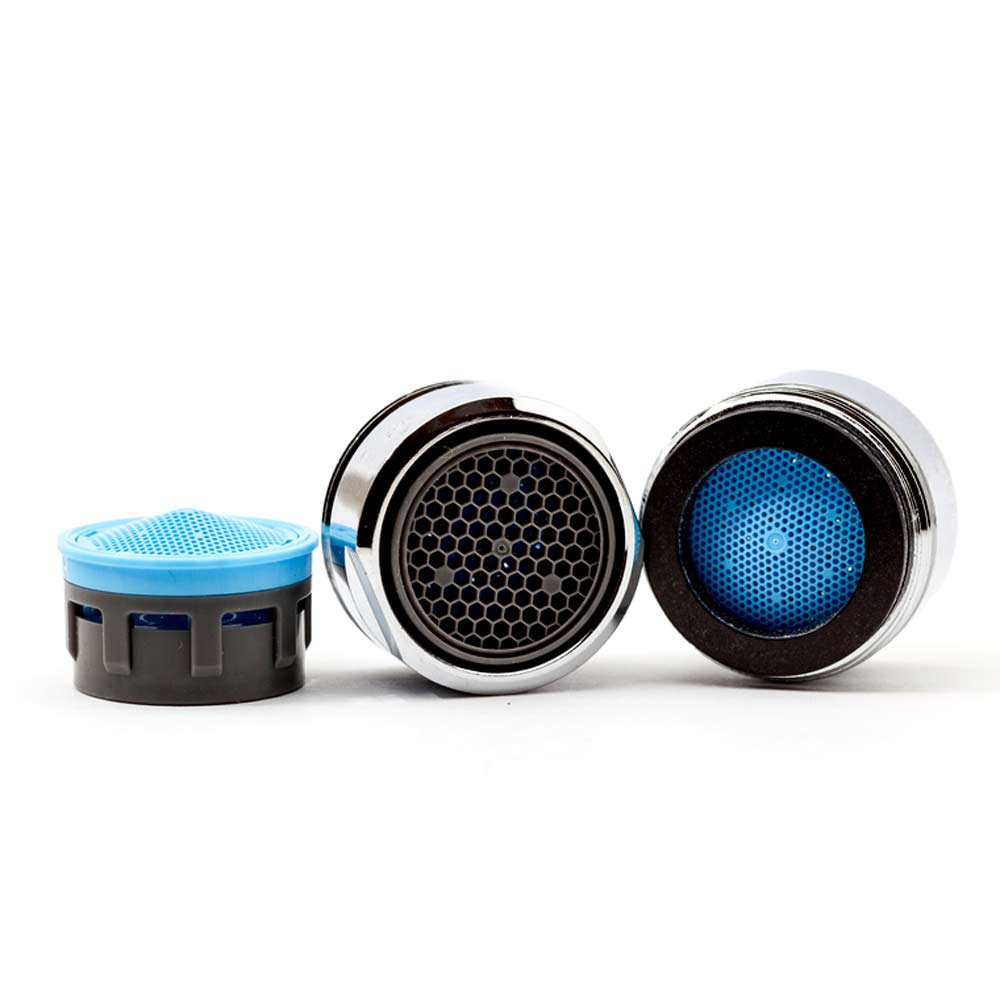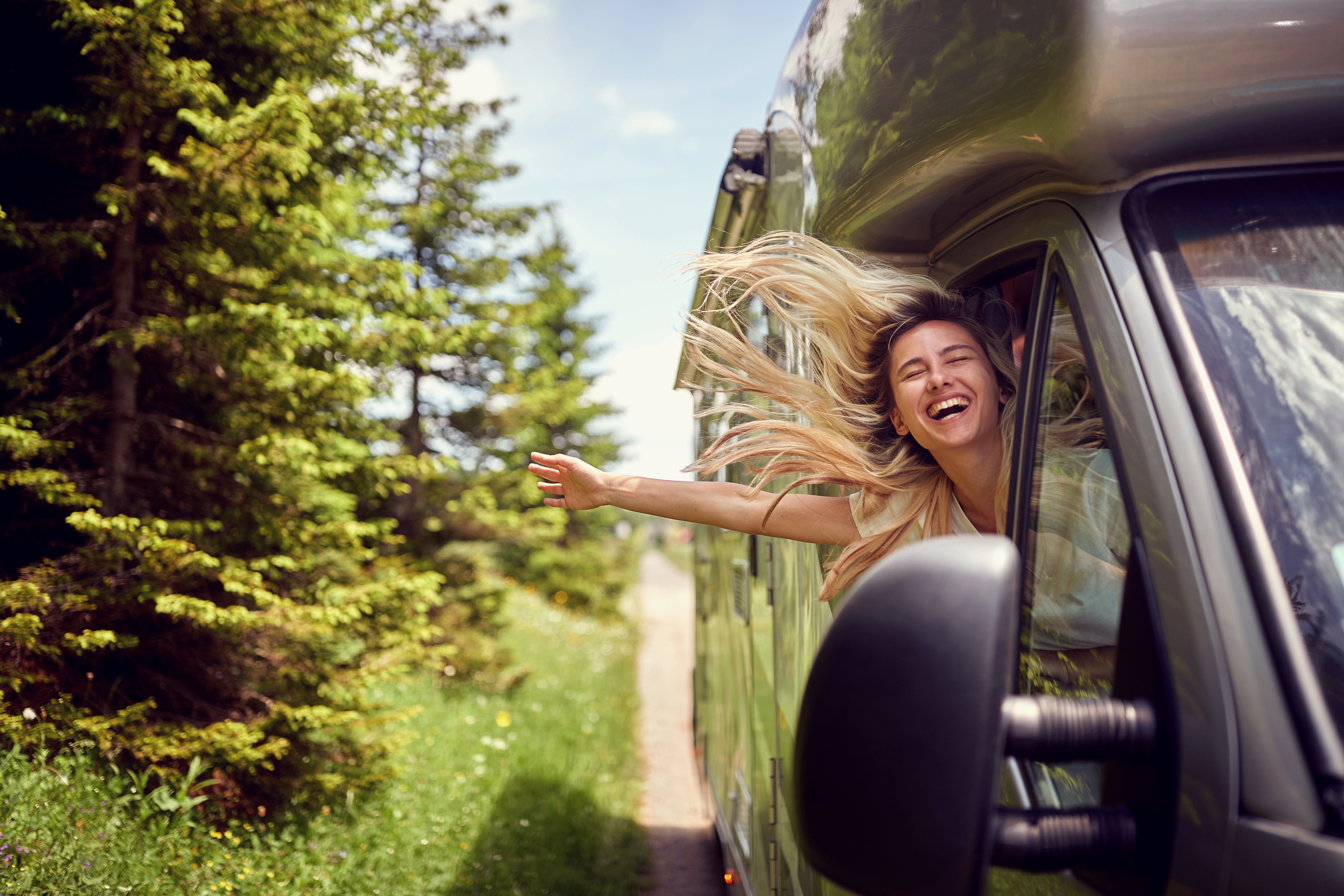
guidebook
Saving water in a motorhome
Practical tips for everyday life as a camper
Water is a precious resource, especially if you are traveling for a long time in a motorhome or camper. Efficient use and conservation of water can significantly increase self-sufficiency while protecting the environment. This Guidebook aims to present practical tips and innovative techniques to help every motorhome owner minimize water consumption.
Basics of water consumption in a motorhome
Water is a vital resource when traveling in a motorhome and its availability and use must be carefully planned. High water consumption in a motorhome can lead to a number of problems, especially when traveling in areas where water supply is limited or access to water sources is difficult. Quickly empty tanks mean you have to make more frequent stops to refill, which in turn limits your flexibility and independence when traveling.
To effectively manage and reduce water consumption, it is first important to develop an understanding of the basics of water consumption in a motorhome. How much water do we need every day? What are the biggest water consumers in a motorhome and how much water can be transported at all?
The water requirement in a motorhome
Water consumption in a motorhome or camper van can vary greatly. Depending on the equipment of the motorhome, the degree of self-sufficiency, the number of people on board and the respective showering and cooking habits. The average per capita consumption per day in a motorhome is around 15-20 liters.
The main consumers of water on board include showering, which requires around 5-10 liters per shower, using the toilet with around 2-3 liters of water per flush and cooking and cleaning the dishes, also with 2-3 liters on average. In addition, drinking water needs another 3 liters per person per day if the water is filtered. water is filtered and drunk directly from the tap.
A family of 4 can easily consume 60 liters of water per day.
Water tank capacity in a motorhome or campervan
Just as personal water requirements vary from person to person, the capacity of the water tanks in motorhomes also varies considerably. An average motorhome usually has a water tank with a capacity of around 100 to 150 liters. In contrast, smaller campervans are often equipped with water tanks that only hold 30 to 50 liters. Larger tanks are often not installed for reasons of space and weight (3.5t).
This means that a family of 4 only has water for 2 days before they have to go to a new supply station. That costs time and money. That's why we want to give you a few tips on how you can drastically reduce your water consumption.
GOOD TO KNOW!
The main consumers of water in a motorhome are showers, the toilet and daily cooking and washing up.
Practical tips for reducing water consumption
Using water efficiently and sparingly in the motorhome not only means increasing personal comfort by being able to remain self-sufficient for longer, but also practicing responsible use of resources. Conscious water management helps to save costs, protect the environment and can even extend the service life of the water-using systems and tanks in the motorhome. That's why we've put together the most important tips on how you can reduce your water consumption in your motorhome.
Save water when showering
Install water-saving shower heads that reduce the Flow rate without compromising comfort. Only use the water for wetting and showering and do not leave it running while shampooing. If you are traveling in a camper for a longer period of time, you will also find that you don't need to shower every day; once or twice a week is often enough. In addition, you should take advantage of every opportunity to use a public shower, e.g. at a beach or campsite. You can also use dry shampoo in between showers. This also cleanses the hair of grease and dirt and does not require any water at all.
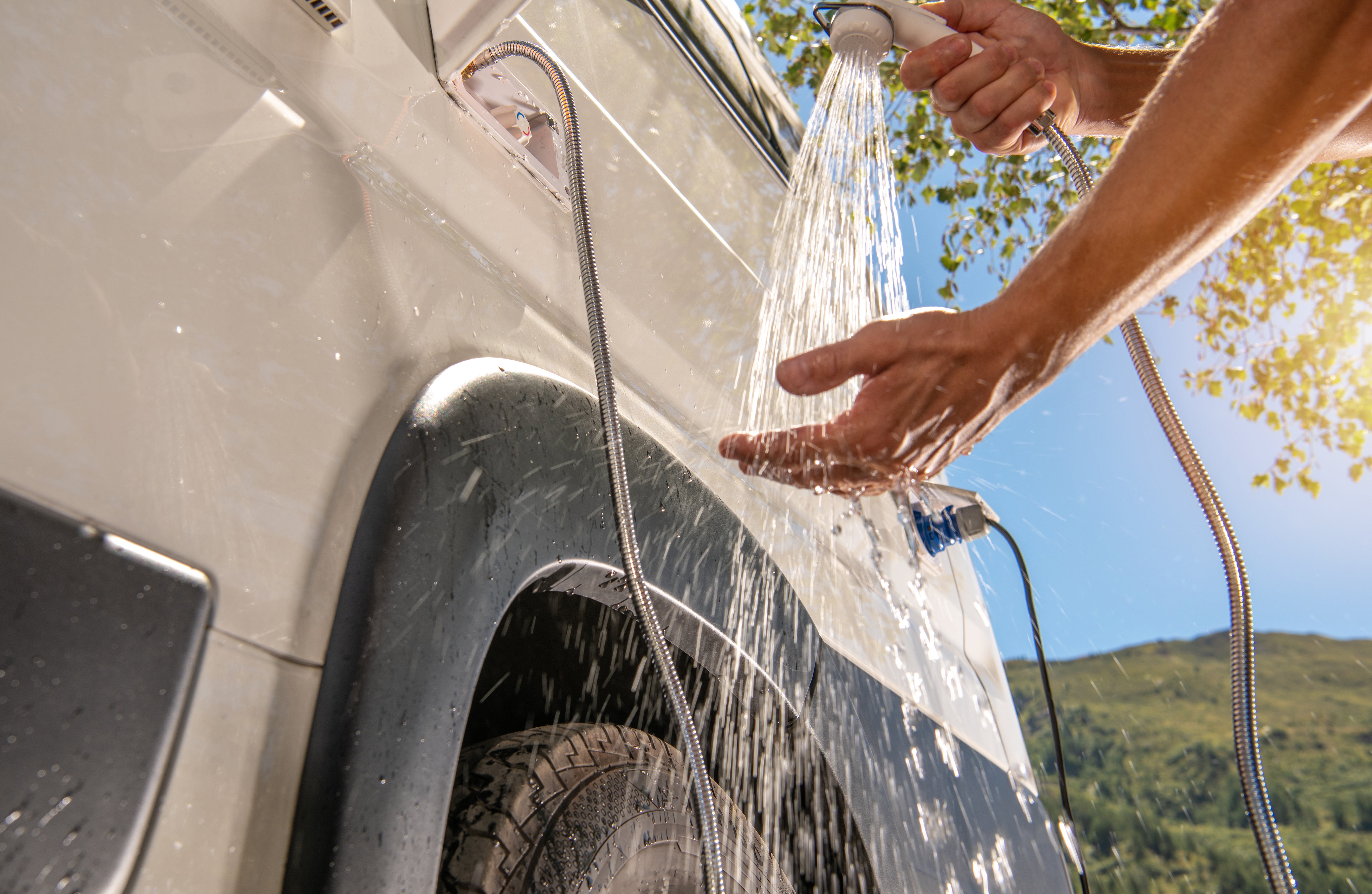
When using the toilet
Modern motorhomes offer options for toilet systems that have been specially developed for low water consumption. Low-flush toilets use significantly less water per flush compared to conventional toilets. Nevertheless, the capacity of the waste tank is often very limited and is not the ideal solution for families who do not want to drive to a disposal station every day. The ideal solution in a motorhome is a so-called dry toilet or dry separation toilet. These do not require any water and rely on biological processes instead of chemicals.
When washing dishes
First of all, avoid pre-rinsing dishes under running water. A good strategy is to soak the dishes in a bowl with a little water and detergent before washing. This makes it easier to remove food residues and saves the water that would otherwise be used in the pre-rinse, and then use the two-bowl method: one bowl for the wash water and another for the rinse water. This allows you to wash several items in the same amount of water without using fresh water for each item. You can change the water if necessary, but you will use significantly less overall, and the efficient use of detergent is also important. A concentrated detergent requires less to create enough foam for cleaning. This also means that you need less rinsing water to remove soap residue from the dishes, so instead of using a sponge, you should use a dishwashing brush. It is often more effective at removing food residue and you need less water and soap. Sponges absorb more water and detergent, which increases your consumption unnecessarily.
Use of aerators to save water
A simple but effective way to reduce your water consumption is to use aerators - also known as aerators. These small faucet attachments can have a significant impact on your water consumption.
Aerators work by mixing the water flow with air. This causes the water stream to appear fuller, even though less water is actually being used.
The result is a reduction in water consumption of up to 50% without sacrificing comfort. This can make a huge difference to water consumption, especially when washing hands and dishes in a motorhome.
The installation of aerators is simple and requires no special tools or expertise. They are inexpensive to purchase and can be adapted to most standard fittings in your motorhome. As well as saving water, aerators also help to reduce energy consumption as less water needs to be heated, making them an environmentally friendly and economical choice.
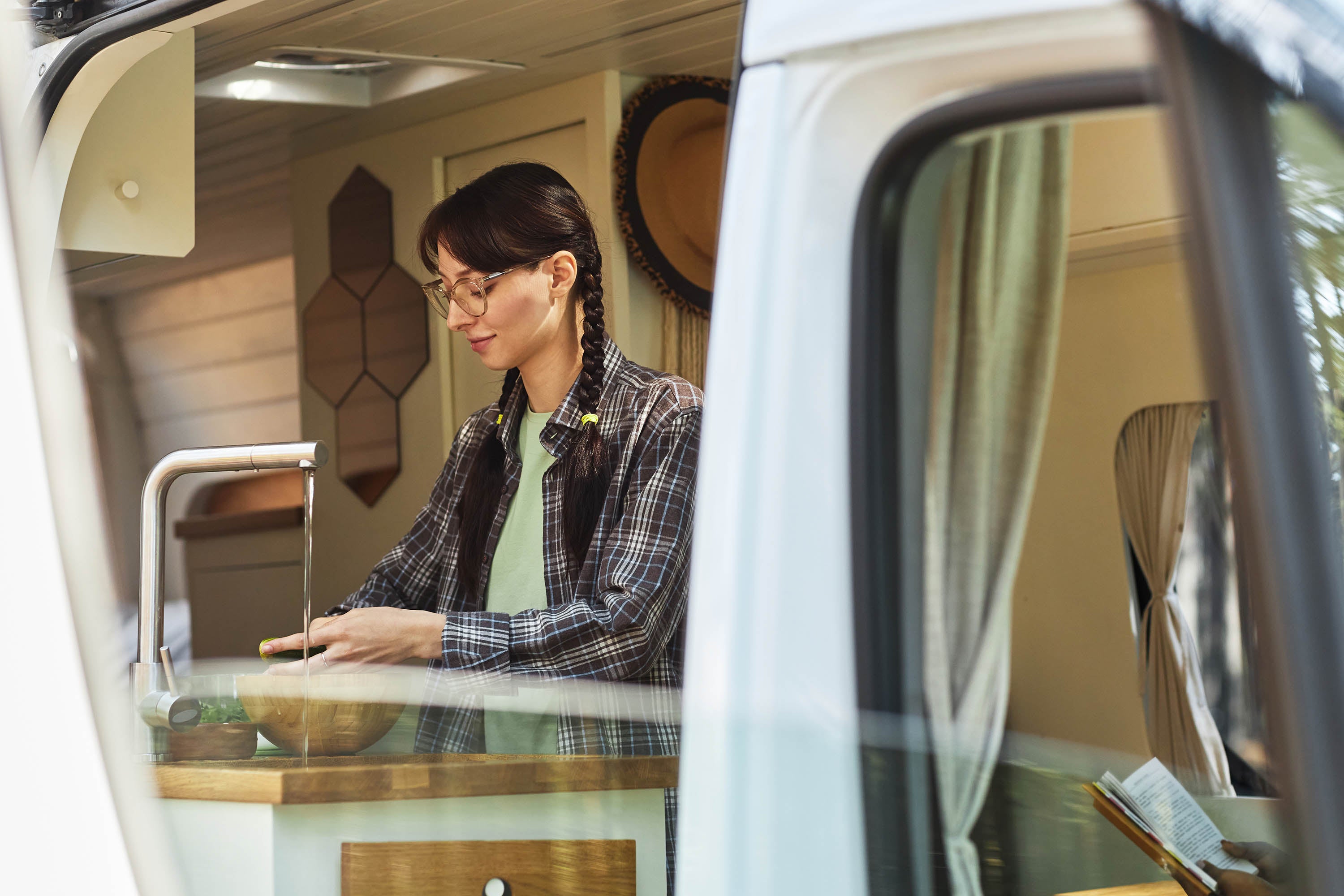
Water management in the motorhome
Efficient water management in your motorhome is crucial for making the best use of your water supply while ensuring the quality of the water available. For example, by using apps and modern monitoring systems for your water in the motorhome, you can better assess your own water consumption and take measures to reduce it if necessary.
In addition to reducing consumption, ensuring water quality is of great importance. The use of a water filter in the motorhome is an effective method of purifying drinking water from potential contaminants such as bacteria, viruses, heavy metals and chemicals. There are different types of water filters, including activated carbon filters, nanofilters and UV light systems, which can be selected depending on your needs and water source.
The combination of reducing water consumption and using a water filter to treat drinking water can extend the self-sufficiency of your motorhome or camper and protect the health of all your fellow travelers.
FAQs - Frequently asked questions about saving water in a motorhome
Related articles and products
Sources
camperwelten.com - Saving water in your motorhome - camping.info - 7 typical rookie mistakes when camping with a motorhome
- 321off.com - Saving water in the camper
- trelino.com - Guidebook dry separation toilet

